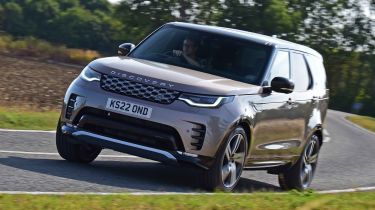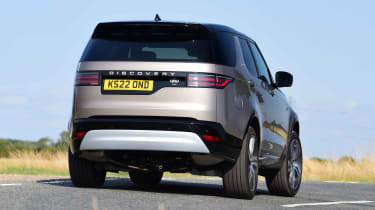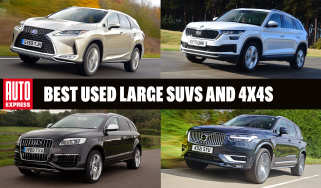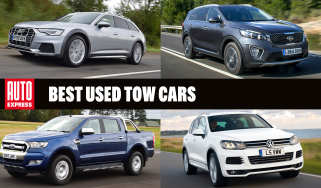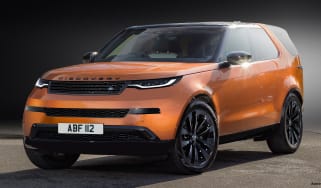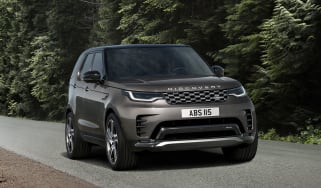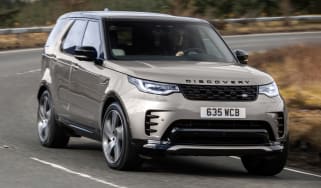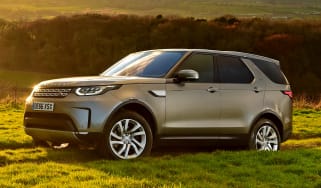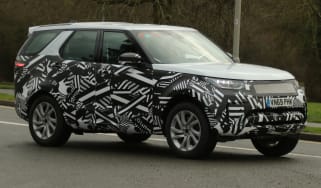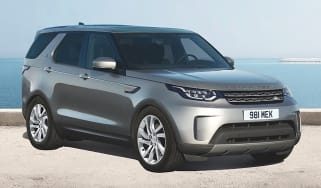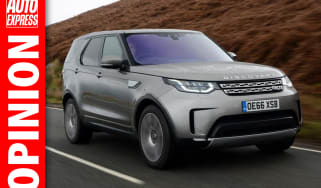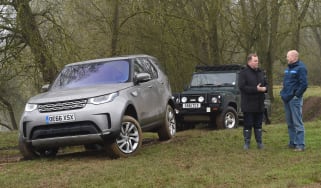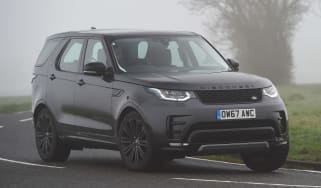Land Rover Discovery review: still a great posh family seven-seater
The fifth-generation Land Rover Discovery isn't cheap, but it's still one of the best all-round family cars money can buy

The latest Land Rover Discovery is the most capable yet. It manages to blend the unrivalled off-road ability and toughness of the company's previous 4x4s with a considerably better on-road driving experience and greater efficiency.
The Discovery is impressively refined, yet it still delivers all the versatility you’d expect from an upmarket seven-seat 4x4. In fact, this Land Rover is almost unsurpassed when it comes to coping with everything from the school run to a fully loaded excursion up a mountain.
Granted, there are rivals that are more adept in the bends, and the Land Rover's looks will divide opinion, but few can match the Discovery’s ability to deliver on-road comfort that doesn’t come at the expense of its consummate off-road abilities. If you factor-in some of the smart new technology on board, the Discovery is still a very capable package indeed.
About the Land Rover Discovery
The current Land Rover Discovery is the first to sport a more rounded (and, therefore, aerodynamic) look. Buyers used to the square shape of the Discovery 3 and 4 may not have warmed to the more streamlined design, but what has remained intact is the spacious 7-seater interior that made the latest Discovery’s predecessors so popular. A facelift in 2020 freshened the exterior, streamlined the engine lineup and added Land Rover's new Pivi Pro infotainment system.
Unfortunately, as you may have guessed, the Discovery is not cheap. At more than £60,000, it has moved well beyond the realms of the family SUV market and into the world of luxury 4x4s. It challenges other upmarket seven-seat SUVs, such as the Audi Q7 and Volvo XC90, while some buyers might even consider the Defender 130 model (with seating for eight), or cars like the BMW X5 and Mercedes GLE, which offer the option of a third-row of seats that fold out of the boot floor.
A radical diet has helped the latest Discovery shed 480kg when compared to the last model through extensive use of aluminium in its construction. Mind you, a kerbweight of well over 2,300kg means this is still a heavy car.
More reviews
Car group tests
Long-term tests
Road tests
- Land Rover Discovery (Mk1, 1989-1998) icon review
- New Land Rover Discovery Metropolitan Edition 2022 review
- New Land Rover Discovery 2021 review
- New Land Rover Discovery Si6 2018 review
Used car tests
At least the reduced weight means the range of six-cylinder engines in the Discovery don’t have to work so hard to get you moving. The engine line-up comprises a 3.0-litre mild-hybrid diesel unit available in two states of tune: the D250 delivering 247bhp (oddly only available in high-end Dynamic HSE trim) and the D300 with 296bhp (available throughout the rest of the range). The petrol range consists solely of a 355bhp 3.0-litre straight-six P360 variant. Unlike its Q7, X5, GLE, and XC90 rivals, there isn’t a company-car-friendly plug-in hybrid version of Discovery, so its emissions are relatively high.
Every model features electronically controlled air suspension and Land Rover's Terrain Response system that allows you to adjust the diffs, ride height and traction control to suit different grip conditions. In its basic form, it’ll get you further into the wilderness than almost all its rivals, but with the optional Advanced Off-Road Capability pack, the Discovery should become pretty much unstoppable off-road.
There are four trim levels: S, Dynamic SE, Dynamic HSE, and Metropolitan Edition. If you run a business, there’s also a Commercial version of the Discovery available, where the rear seats have been removed and a bulkhead installed for those who need a vehicle with greater off-road capability than a traditional van can provide.
Whichever model you choose, there aren't many full-size 4x4s that offer the kind of space the Discovery has to offer. The seven-seat layout has room for adults in every seat, while the car's off-road ability is second to none in the class, making this a practical and versatile family car with added 'go anywhere' appeal.
Used and nearly new
The Discovery still remains a sought-after luxury SUV, although buyers have more choice than ever from the Land Rover marque, with the Evoque, Discovery Sport, Defender, Velar and Range Rover Sport offering a way into Land Rover ownership. The prestigious Range Rover now sits in an altogether different market, commanding prices that push it into competition with the likes of the Bentley Bentayga and even the Rolls Royce Cullinan.
Other models in the Land Rover lineup may be more fashionable than the Discovery, but it's no less capable than its siblings, offering seven seats, cavernous space, a premium interior and all the 4x4 ability you might need.
Land Rover Discovery history
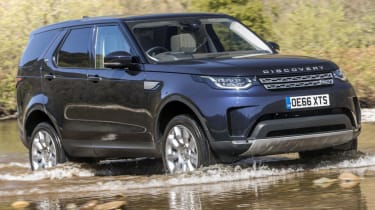
Land Rover Discovery Mk5: 2017-date
Buyers looking for a used Land Rover Discovery will find that the Mk5 model still commands a strong price. Residual values of around 60 per cent after a typical three-year/36,000-mile ownership period (from new), mean that you'll still need plenty of cash to secure a decent example, but in exchange, you'll benefit from a supremely capable workhorse, with added refinement and good levels of on-board tech.
We'd suggest going for a smooth V6 diesel model, while you'll have to decide whether you can live with the base model kit list (which is still pretty comprehensive), or pay a premium for a luxury HSE model. Read our full Mk5 Land Rover Discovery buyer’s guide here…
Land Rover Discovery Mk4: 2009-2017
Based on the Discovery 3, the Mk4 model brought in a fresh exterior design, a new cabin and upgraded tech, but still maintained its practical seven-seat layout and huge load space. Power was limited to a V6 diesel, while unlike the Mk5 model, entry level cars did not offer a tremendous amount of kit, so best to look out for a mid-spec SE or a top HSE version. Read our full Mk4 Land Rover Discovery buyer’s guide here…
Other Land Rover Discovery models
Due to the Discovery's excellent off-road ability, you'll almost certainly find earlier models up for sale at 4x4 specialists all over the country. The Mk1 cars were produced between 1989 and 1998, and are verging on becoming classics, while those looking for even better load space may want to seek out a Mk2 Discovery, which benefited from an extended rear body compared to its predecessor. Production of the Mk2 model continued until 2004, when the Mk3 surfaced with a more modern, stylish exterior and a selection V8 petrol and V6 diesel engines sourced from sister firm Jaguar.
Land Rover Discovery HSE Luxury long-term test
Back in 2017, Editor-in-Chief, Steve Fowler, ran our Discovery long-term test car. At the time, it was our reigning car of the year, and he put it through the rigours of daily life over 15,000 miles to find out if we’d made the right decision.
Fortunately, we had. It proved to be a comfortable and – for the most part – dependable steed that, on more than one occasion, took on the role of a van during several bouts of furniture moving. The infotainment system on our pre-facelift example proved to be a constant source of issues, although that has since been ditched in favour of Land Rover’s latest Pivi Pro system, which came in during the Discovery’s facelift in 2021.
For an alternative guide to the Land Rover Discovery, visit our sister site carbuyer.co.uk...

